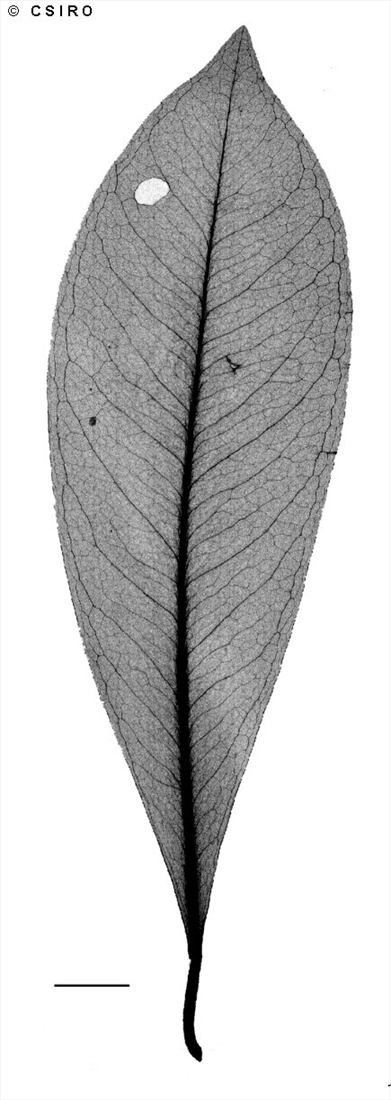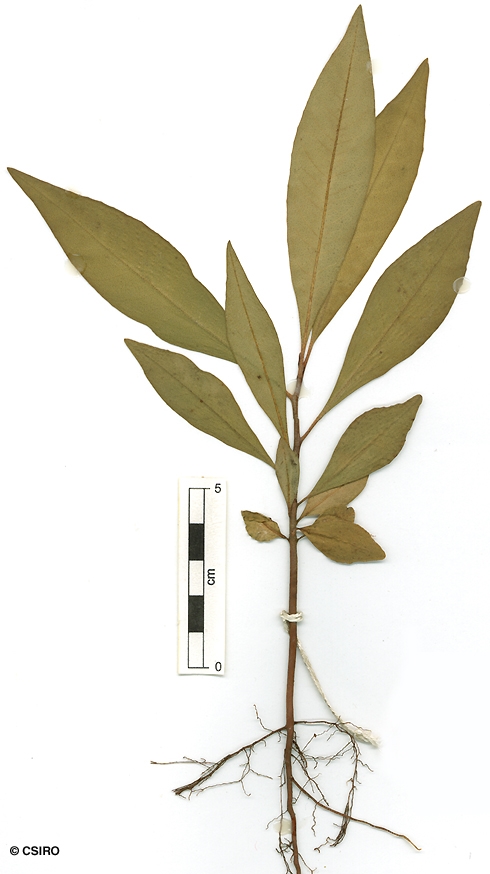Australian Tropical Rainforest Plants - Online edition
Ardisia elliptica Thunb





Thunberg, C.P. (1798) Nova Genera Plantarum 8: 119. Type: Sri Lanka.
Shoe-button Ardisia
Usually flowers and fruits as a shrub about 2 m tall.
Leaf blades about 10-13 x 3.5-4.5 cm, petioles about 0.9-1.6 cm, grooved on the upper surface. Lateral veins curving inside the blade margin and forming inconspicuous loops. Oil dots translucent in fresh material (pink to red in dried leaves), numerous, rather large, mainly orbicular in shape with a scattering of streaky dots.
Features not available.
Cotyledons broadly elliptic to orbicular, about 13-22 x 7-11 mm, glabrous, petioles short, about 2-3 mm long. Oil dots red. First pair of leaves about 22-28 x 10-14 mm, petioles 2-4 mm long. Oil dots red. At the tenth leaf stage: leaf blade narrowly elliptic, oil dots red, mainly orbicular in shape. Seed germination time 61 days.
This species may have medicinal properties. Previously this species was incorrectly referred to as Ardisia solanacea.





